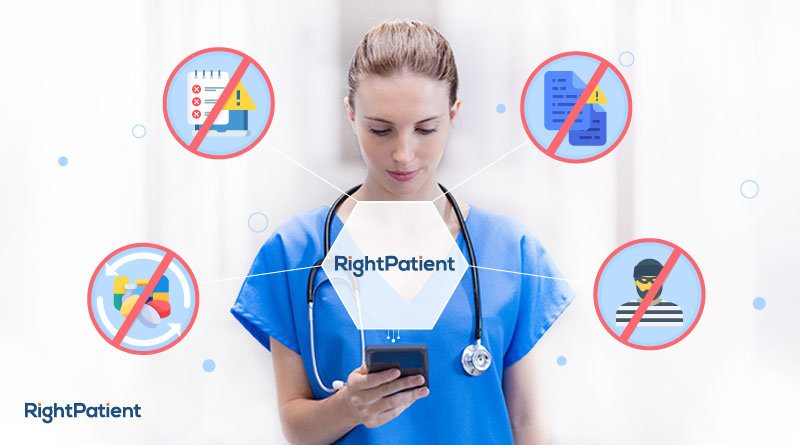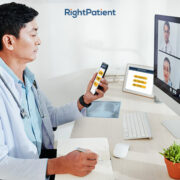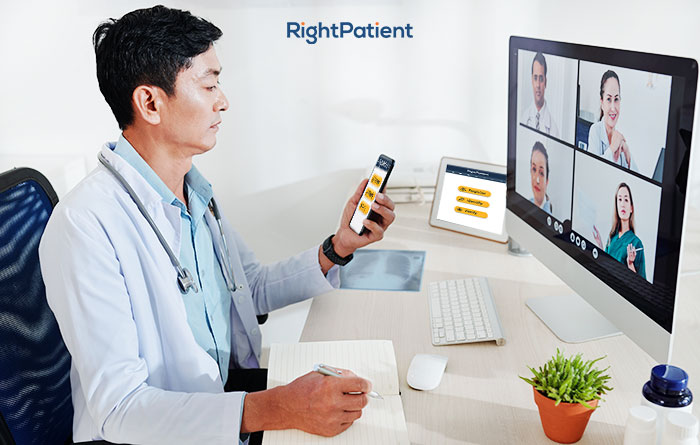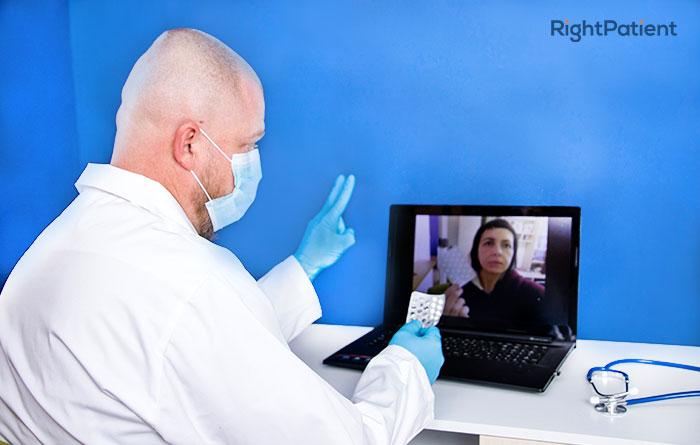The Benefits of Telehealth and How to Ensure Patient Safety During Virtual Visits

Telehealth is nothing new – it has been around for quite some time now, especially in the U.S. Unfortunately, its potential was not fully realized before the pandemic because healthcare providers were too wary about using it whereas pundits were busy arguing and analyzing the drawbacks and benefits of telehealth. As a result, not many patients were exposed to virtual visits – leading to telehealth becoming nothing more than a rarely used add-on that was just collecting dust in the drawer of unused tools, figuratively speaking. However, as we all know, the pandemic changed everything, and telehealth became essential. The pandemic allowed telehealth to show its potential as it was quickly thrust into the limelight.

RightPatient prevents medical identity theft during virtual sessions
Let’s take a look at how virtual sessions are transforming healthcare, the benefits of telehealth for everyone involved, and how patient safety can be ensured during these remote patient visits.
How telehealth became relevant again
Technology has slowly but steadily become an integral part of the U.S. healthcare system – AI, wearables, machine learning, and other technologies are being tested to detect whether they improve healthcare outcomes for the masses or not. Unfortunately, as previously mentioned, it was ignored due to a number of factors, and the benefits of telehealth were also overlooked. One of the biggest advantages of telehealth is that it offers patient care beyond the walls of hospitals and health systems. This basically means that patients can get care right from the comfort of their homes or anywhere they want – enabling true, remote care. The future of telehealth looked quite promising.
And then, a certain novel virus overwhelmed the entire world and burdened healthcare systems.
Hospitals were overwhelmed with COVID-19 patients as they were coming in huge numbers – healthcare facilities had to allocate all their resources to serve patients. Moreover, due to the nature of the virus, other patients were not allowed into hospitals and they were diverted towards telehealth – the rest is history.
Telehealth’s usage increased dramatically as regular patients started using it and caregivers started adopting different telehealth platforms to accommodate their patients. While telehealth’s usage has been slowing down somewhat, it’s still here to stay.
That being said, let’s take a closer look at the benefits of telehealth enjoyed by patients and healthcare providers.
Benefits of telehealth
It makes healthcare more convenient than ever

RightPatient ensures patient safety during telehealth visits
Before telehealth became a force to be reckoned with, many patients had to travel long distances to see their physicians in person, something that is cumbersome, expensive, and inconvenient. However, thanks to telehealth, patients can see their physicians from their preferred locations. Patients don’t need to travel miles – all they need is an internet connection and a communication device. Patients can simply book an appointment, get the link to the virtual session, and consult with their physician(s) at the location and time that works best for them – making a win-win situation for everyone involved.
Moreover, telehealth helps globetrotting physicians provide healthcare services to their patients while they’re out of the country – ensuring that all of their patients are cared for.
It enables remote access to healthcare services
One of the biggest advantages of telehealth is that it takes healthcare out of the hospitals, that is, it enables patients to get healthcare services from the comfort and safety of their homes. Telehealth was extremely helpful when the pandemic hit in full force. It was one of the key instruments that helped reduce infections since it helped patients receive care without putting themselves at risk of contracting the virus by visiting hospitals.
However, with the pandemic, telehealth has also shown how useful it can be in providing remote care to patients that either cannot come to healthcare facilities or are not willing to. Since most patients are now familiar with telehealth, healthcare providers are also investing heavily into it – some are developing their own telehealth platforms whereas others are using established solutions to support their patients.
While telehealth can never fully replace inpatient visits that are required for lab tests, surgeries, etc., it can handle patients that have chronic diseases but are not able to visit hospitals. All in all, telehealth’s future looks bright, something that was uncertain before the pandemic.
It reaches more patients
Most patients usually prefer going to the closest healthcare provider for check-ups and getting treatment. However, many live in rural areas and do not have the means to travel to the city. Fortunately, telehealth breaks down that barrier as it does not impose any physical limitations – a patient can consult a physician that is thousands of miles away. This opens up new opportunities for the caregivers as they can serve a larger population.
There’s more to telehealth
While there is no doubt that telehealth is here to stay, it’s still in its early years and can put patient safety at risk. For instance, during telehealth sessions, patients can face the same issues they do during inpatient visits, such as patient misidentification. Moreover, many experts are concerned about medical identity theft that might occur with telehealth visits. Fortunately, RightPatient can help prevent that – improving quality and safety in healthcare.
RightPatient enhances patient safety
A leading touchless patient identification platform, RightPatient is being used by caregivers to protect patients from healthcare fraud, medical record mix-ups, and more. RightPatient can also be used across the care continuum, making it ideal for telehealth sessions. It helps patients validate their identities, preventing medical identity theft by red-flagging fraudsters.
RightPatient supports telehealth sessions as well as inpatient visits – contact us now to learn how we can help enhance patient safety for your healthcare facility.






























